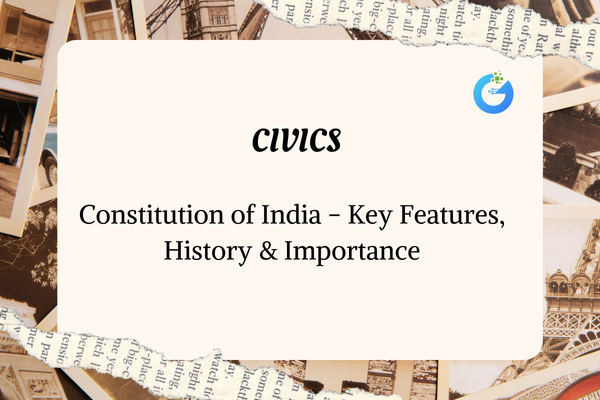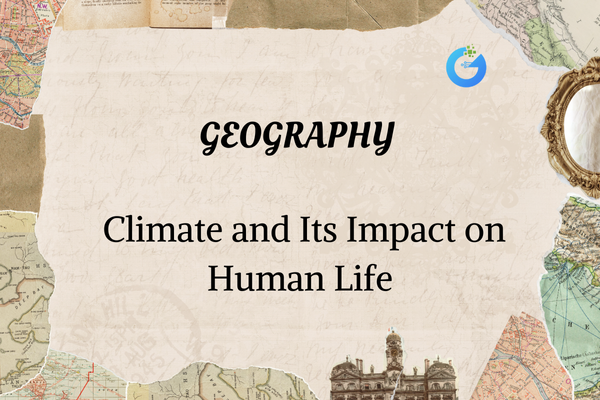Introduction:
Imagine a rulebook that lays down how a country should function, how its people should live together peacefully, and how the government should serve the people. This rulebook in India is called the Constitution of India. It is a written document that explains the principles, rules, and laws for the country’s governance. It’s like the guiding light for India, ensuring that everyone, from the President to the common citizen, knows their rights, responsibilities, and how the country is run.
The Indian Constitution was adopted on 26th January 1950, and that is why India celebrates Republic Day every year on this day. It is the longest written constitution of any country in the world, containing over 450 articles.
expert-led Civics classes – visit our website to learn more
Who was involved in the creation of the Constitution?
The Constituent Assembly, which included some of India’s greatest leaders and thinkers, was responsible for drafting the Constitution. Key figures like Dr. B.R. Ambedkar (who is often called the Father of the Indian Constitution), Jawaharlal Nehru, and Sardar Vallabhbhai Patel played crucial roles in the formation of the Constitution.
It took 2 years, 11 months, and 18 days for the Constituent Assembly to complete the Constitution, making it a truly monumental effort by India’s founding leaders.
Why is the Constitution of India important?
The Constitution is the backbone of India’s democracy and provides a framework for how the government works. Here’s why it’s so important:
- Ensures Justice and Equality: The Constitution guarantees that all people, regardless of their caste, religion, or gender, are treated equally and have access to justice.
- Establishes a Democratic Government: It sets up a democratic form of government where power is vested in the hands of the people, who elect representatives to make decisions on their behalf.
- Protects Fundamental Rights: It lists the Fundamental Rights of citizens, ensuring that every person in India enjoys certain basic freedoms and protections.
- Guides the Legal System: The Constitution serves as a reference point for laws, courts, and lawmakers, ensuring that justice is administered fairly and consistently.
Without the Constitution, India would lack a clear framework for governance, and people’s rights and freedoms could be easily taken away.
When was the Constitution created?
The Constituent Assembly first met in 1946, and after careful discussions, the Indian Constitution was adopted on 26th November 1949. It came into effect on 26th January 1950, making India a Republic.
The choice of January 26th was symbolic—it was the day when the Indian National Congress had declared complete independence (Purna Swaraj) in 1930. This day marks India’s transition from being a British colony to a free, self-governing republic.
Where is the Constitution followed?
The Constitution is followed across India and is the supreme law of the land. It is the guide for all states and union territories of India. Its principles are followed by all organs of the government: the Legislature, the Executive, and the Judiciary.
It is also important to note that the Constitution is not just a national document—it plays a role in guiding the states and regions as they form their own laws, keeping the spirit of unity and democracy intact.
How does the Constitution work?
The Constitution of India works as a set of rules and principles that define the following:
- The Structure of Government: It divides the government into three branches:
- The Legislature (Parliament): Makes the laws.
- The Executive (President, Prime Minister, Cabinet): Implements the laws.
- The Judiciary (Supreme Court, High Courts): Interprets and upholds the laws.
- The Legislature (Parliament): Makes the laws.
- The Distribution of Power: The Constitution divides power between the Central Government and State Governments, ensuring that both levels of government have their own responsibilities and duties.
- Fundamental Rights and Duties: The Constitution guarantees certain Fundamental Rights to all citizens, such as the right to equality, freedom of speech, and protection from discrimination. It also outlines Fundamental Duties, reminding citizens of their responsibilities toward the nation.
- Amendment Process: The Constitution is flexible and can be amended to meet changing needs, though changes require careful thought and debate.
Core Concepts Table:
| Concept | Explanation |
| Preamble | The introduction to the Constitution, stating the guiding principles. |
| Fundamental Rights | Rights guaranteed to all citizens, like equality, freedom of speech, etc. |
| Directive Principles | Guidelines for the government to work towards achieving social justice. |
| Separation of Powers | The division of responsibilities among the three branches of government. |
| Amendment Process | The way the Constitution can be changed to adapt to new circumstances. |
FAQ:
- Q1: What is the Preamble of the Constitution?
A: The Preamble is the introduction that sets out the goals and values of the Constitution, such as justice, liberty, and equality. - Q2: Can the Constitution be changed?
A: Yes, the Constitution can be amended, but the process requires careful deliberation and approval by Parliament. - Q3: Who has the final say in interpreting the Constitution?
A: The Supreme Court of India has the power to interpret the Constitution and ensure that all laws follow its principles.
Fun Facts:
- The Indian Constitution is the longest written Constitution in the world.
- Dr. B.R. Ambedkar, the principal architect of the Constitution, is often referred to as the Father of the Indian Constitution.
- The Preamble of the Indian Constitution was inspired by the Preamble of the American Constitution but focuses more on social justice and equality.
Conclusion:
The Constitution of India is the foundation of the Indian democratic system. It provides a blueprint for the governance of the country and protects the rights of all its citizens. By understanding the Constitution, we not only learn about the laws that shape our nation but also the values of equality, justice, and liberty that India stands for. It’s a living document, guiding India through the changes and challenges of the modern world.








